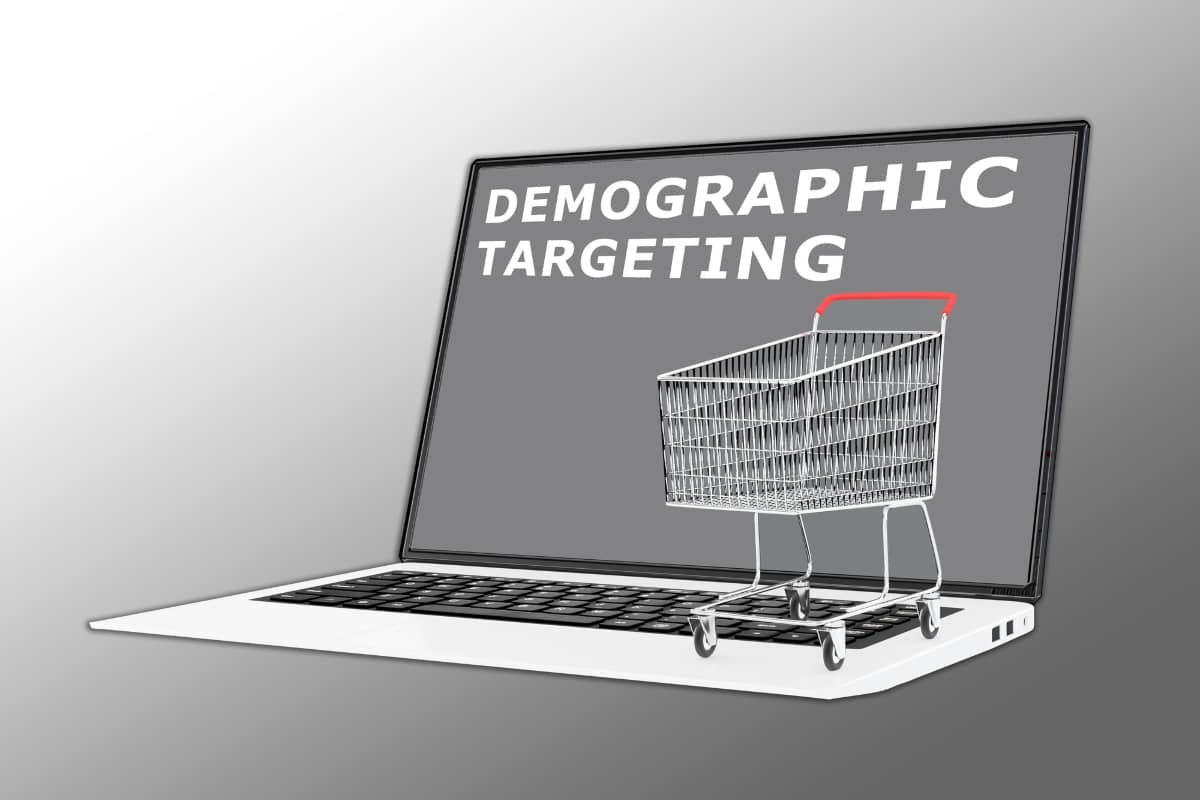How to Create a Buyer Persona & Find Your Ideal Customers
If you’re in business — whether B2B or B2C — you need to create a buyer persona to find your ideal customer.
You need to know who your potential buyers are, where they hang out, their problems, and where they're at in the buyer's journey.
More importantly, you need to know what you bring to the table to solve those problems.
Buyer persona development empowers your content marketing with meaningful connections, qualified leads, and a dynamic customer experience that keeps customers coming back.
What Is a Buyer Persona?
A detailed buyer persona compiles all the features, needs, problems, desires, and demographics of your ideal customer profile into a semi-fictional character.
It’s about building out as much information as possible about your target audience and using it as the basis for everything from product development to your content marketing strategy.
You give this buyer persona a face, a name, and a personal story (based on market research of your target audience, of course).
This will help you succeed in your digital marketing effort.
Why Do You Need a Buyer Persona?
Your customers want to feel understood, heard, seen, and acknowledged.
A buyer persona profile helps you know and understand your target audience and focus on what they want to get out of your digital marketing.
Most businesses also have more than one type of customer, meaning you likely need to create multiple buyer personas — one for each type.
This helps you plan your content creation strategy to align with your customer personas.
Then conversions result as if by magic because you created a compelling connection and value proposition.
Without a user persona, you risk creating the wrong content for your social media, ads, and even your website because it won’t hit the mark.
When you know exactly who you are talking to, transactions happen much more naturally.
Benefits of Buyer Personas

Creating an effective buyer persona helps you get out of your own head (where you’re probably overthinking) and get into your ideal customer’s head instead.
You’ll have a frame of reference to help you feel how they feel and consider their needs, problems, and desires.
Why?
Because buying happens based on feelings and logical justification comes later (ice cream is protein, right?).
What does this look like in practice? It means that you keep your target audience — your buyer persona — in mind with every piece of content you create, every product you launch, every newsletter you send, and every website update you make.
It’s also excellent customer service!
Buyer personas help you ensure that the right people — people interested and searching for your product or service — see your ads and marketing campaign.
It’s about sharpening your arrow to hit the target instead of simply firing and hoping your arrow will land in the right place.
The result?
You get much better leads, more conversations, and more sales.
A community begins forming around your brand, and your credibility grows.
Your customers will enjoy a relevant and engaging experience that meets them right where they are.
Essential Elements of Buyer Personas
What are the most essential elements of buyer personas?

Everything you can think of.
For instance, think of your best friend and everything you know about this person, right down to how they think and act in certain situations or when trouble strikes.
You know what they feel, their greatest insecurities and weaknesses, their strengths, and what motivates them to action.
It's very similar to your buyer persona — you need demographics — age, social background, income, education, etc.
Personal background information such as career, goals, problems, weaknesses, needs, strengths, and motivation are also helpful.
Zoom in on values, beliefs, and typical buying reasons and patterns.
How To Create a Buyer Persona
Let’s show you how to create a buyer persona in 5 simple steps.
1. Conduct meticulous audience research.
You can never do enough target audience research.
A great way to do this is to conduct a customer behavior analysis.
Look and listen for what your existing customers say on social media, which platforms they are using, and why.
Read up on what current customers say about your competitors and look for content gaps that you can do even better.
Create content that encourages your target audience to talk to you.
Collect feedback (both good and bad) about your products or services, and share reasons they buy, what problems they are looking to solve, and the difference that a solution makes to them.
Look deeply into the demographics of your target audience and use as much detail as possible to create your audience persona.
Create multiple personas if you have more than one type of customer persona who frequently buys from you.
For instance, you can have a B2B buyer persona and a B2C buyer persona.
The more specific you get on your research, the more accurate every step forward you take from here will be.
Analyze your current data — who are your most frequent buyers and why? What do they have in common? Who are the people who most frequently engage with your social media posts, and why?
2. Pinpoint your customers’ goals and pain points.
This is key in helping you create marketing content that will meet your customers where they are at.
Use surveys, social media, and Q&A sites like Quora and AnswerThePublic to get an idea of your customers’ goals and pain points.

Consider asking questions such as:
- What are your goals, and how are you looking to achieve them?
- What’s keeping you from achieving them?
- What would it mean to you to achieve these goals?
- What difference will achieving these goals make to your life, time, energy, health, future, and income?
- What next step would help you move forward?
The secret is to get the customer to tell you their struggles, stories, hopes, and dreams.
When a customer feels like someone understands their challenges, they are more likely to listen when you propose to offer a relevant solution.
In the middle of your customers’ pain, you should be able to determine where you can bring transformation, relief, etc.
3. Establish how you can help.
Now that you’ve done a fair amount of research on your target audience and their challenges, it’s time to get very clear on exactly how you can help them.
This is less about the features of your product or service and more about the actual benefits those features provide to your customer.
Think in terms of the factors listed below and elaborate on the ones most relevant to what you’re offering:
- Saving time
- Saving money
- Saving energy
- Convenience
- Improving health, mobility, energy, joy, quality of life
- Decreasing/resolving pain
- Brightening the future, expanding possibilities
- Solving as well as possibly preventing the problems your customers are struggling with
- Gaining more fun and entertainment
- Improving relationships
These points are just a guideline, and you should come up with as many as you need to use in your marketing message.
Logically explaining them helps your potential customer make a purchasing decision.
4. Create your buyer personas.
Now it’s time to organize all the audience insights you’ve just compiled.

Doing this in a list fashion or with a diagram of your marketing persona is helpful for you to see all the info you need at a glance.
Remember to include:
- Age
- Geographic location (country, suburbs, city)
- Education
- Income
- Life stage
- Marital status, family, children
- Pets, hobbies, interests
- Goals and dreams
- Problems and needs
- Beliefs and values
- Social media platforms and usage patterns
- Spending patterns
- Where they are in the buyer's journey
And so on.
The idea of this exercise is to be able to speak to a particular person — someone you know really well — rather than a category of people you don’t know at all.
5. Turn your buyer personas into detailed narratives.
Your buyer persona must become like a real person, so to make it easier, give it them a name!

What is this person’s life story?
Write it all out as though you are talking about a real person you’ve met.
Include all the information you researched in this person’s story — the goals, demographics, challenges, pain points, problems, what motivates them, etc.
Create a detailed story about this person’s future that involves them having used your service and product.
Describe how it changed their life and solved their problems, and brought relief, joy, increased savings, or whatever the person’s goal was.
This will also be extremely useful when you create inbound marketing content because it will help you encourage your ideal customer to imagine a similar optimistic scenario.
The more painstaking effort you put into this, the easier it will be to create a marketing strategy that is compelling, irresistible, and effective.
Buyer Persona Examples
Let’s say you want to market to health-conscious corporate businesswomen over 40. You could have a buyer persona example called Driven Danielle:
- Danielle is 43 and single.
- She’s a manager/director/CEO.
- She’s driven by achievement but conscious of her spending habits.
- She likes to eat organic and invests in top-tier health products.
- She runs 4 times a week.
- She drives a BMW and goes on regular meditation retreats.
- She wants to stay healthy and fit.
- Her challenge is time and stress management.
A different buyer persona could be marketing to 35+ middle-class dads who love the outdoors and enjoy artisanal beer? Let’s look into Responsible Roger:
- Roger is 38 and married, with two kids in elementary school.
- He works at a tech firm in a middle management position and has a side-hustle — a small brewery.
- He drives a Subaru.
- He likes to go fishing with his kids on weekends.
- He enjoys surfing vacations in summer.
- His goal is to buy an RV.
See? We all know somebody!
You can use these examples as a buyer persona template to get started.
Who is your ideal buyer persona?
Your ideal target customer is out there.
Now you have a deep understanding of one of your marketing arsenal's most powerful sales tools.
Without a target persona, your content marketing strategy has zero guarantees of success. Results — if any — are sheer luck.
How lucky do you feel?
Heideli Loubser is a wellness and education copywriter and a content marketing strategist helping you grow your business. She is also a solo homeschool blogging mom of two kiddos. When she’s not wielding her powerful pen to help businesses and other parents, she enjoys gardening, painting, caffeine, and dark chocolate in large amounts.